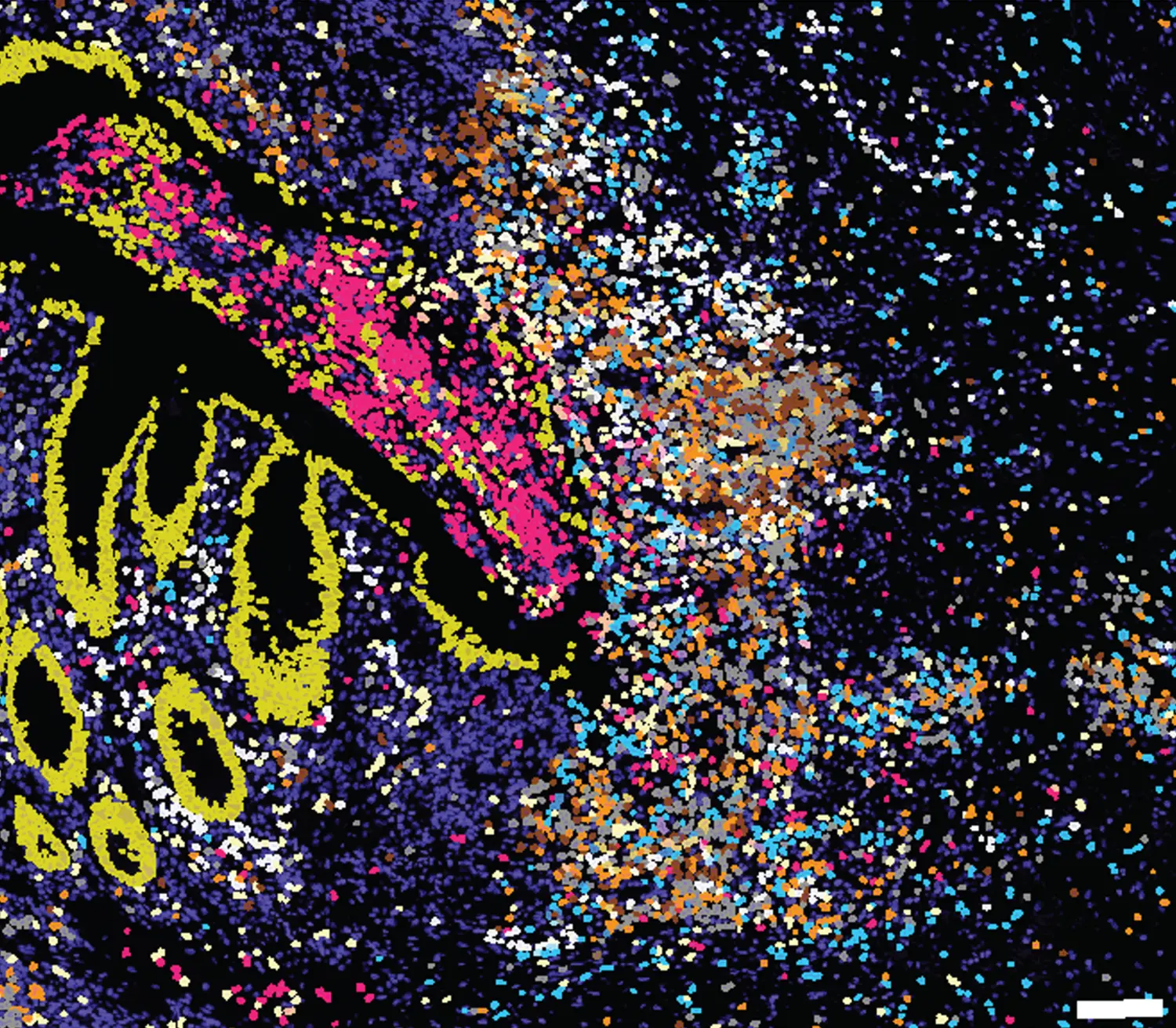Allows researchers to explore previously uncharted territories
The MACSima™ enables the identification and deep phenotyping of cell subsets and identification of novel cell types, their spatial distributions and interactions. In addition to identifying immune and non-immune cells in tissues, the technique also makes it possible to examine their metabolic status. The analytical platform has great potential to advance our current understanding of cell and tissue biology, and potentially identify new biomarkers and targets for immune therapy.
The MACSima™ technique has the potential to overcome limitations of current multiparametric technologies and to complement single-cell experiments.
“The technique represents a leap forward in our field. Its capabilities allow us to explore previously uncharted territories, uncover hidden patterns, and gain deeper insights into complex settings in health and disease. This technology empowers researchers to make pioneering discoveries and to be at the forefront of spatial biology.” says Mattias Svensson, researcher at CIM.
Can promote new research avenues and collaborations
The MACSima™ allows researchers to conduct more comprehensive experiments and enables thorough investigations, leading to robust findings. Leveraging the technique to address research questions in unique ways can lead to novel discoveries, which will positively impact research and innovation.
Introducing the MACSima™ platform equips students and early-career researchers with cutting-edge skills by learning to navigate advanced tools and analyze complex data sets. This knowledge prepares them well for their future career in academia or industry.
“Also, the technique can foster new collaborations. Researchers from different backgrounds can meet, exchange ideas, and jointly address scientific questions. Collaborations amplify our impact and broaden our scientific networks.” Says Mattias Svensson.

